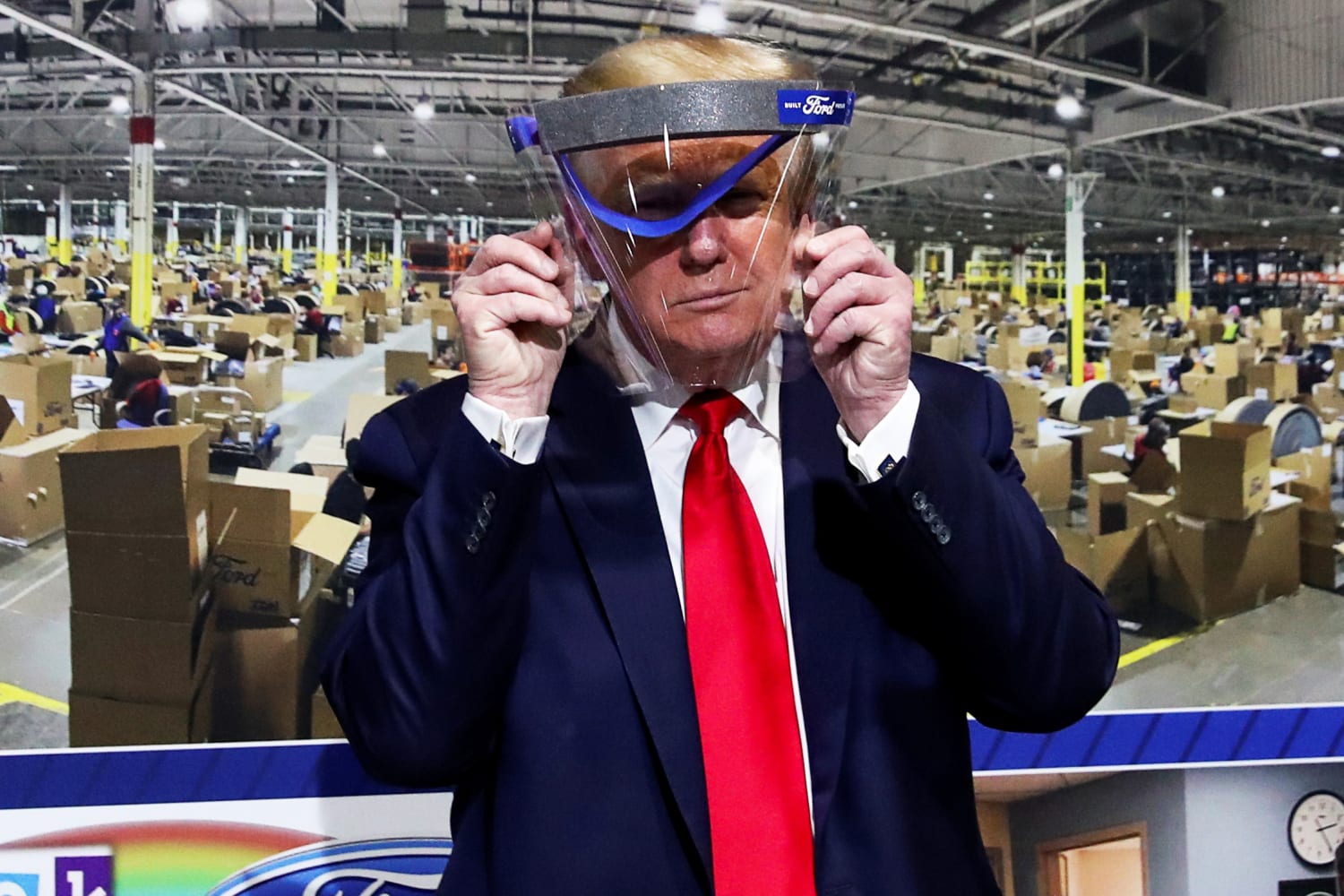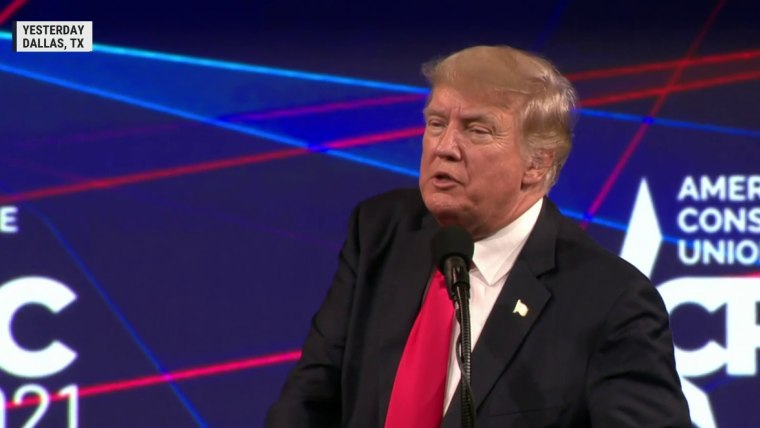This piece has been adapted from “Frankly, We Did Win This Election,” by Michael C. Bender.
For the first three years of his presidency, Trump fixated on two factors that he’d decided would determine whether he’d win another term: the enthusiasm inside his political base, and the strength of the economy. As he left Washington on Sunday, Feb. 23, for a trip to India, both of his leading indicators were forecasting smooth sailing on the electoral waters. He had a 98 percent approval rating among core supporters, virtually unchanged during his first 35 months in office. The stock market — his preferred economic measure — had been on a steady upward trend during that same time, with gains of more than 40 percent in both the S&P 500 and the Dow Jones Industrial Average. During his four years as president, he tweeted about the stock market more than 150 times, mostly to take credit for the gains. About 15 percent of those tweets came during the first two months of 2020.
Trump called Azar in the middle of the night and threatened to fire the CDC doctor unless he could keep her on message.
But as he boarded Air Force One for the eighteen-hour flight back to Washington on Feb. 25, Dr. Nancy Messonnier, the director of the National Center for Immunization and Respiratory Diseases, had just issued a blunt warning at a news conference with reporters about the rapidly evolving and expanding coronavirus situation, warning that “the disruption to everyday life might be severe.” “It’s not so much a question of if this will happen anymore but rather more a question of exactly when this will happen, and how many people in this country will have severe illness,” she said. She spoke of sitting her children down that morning, to prepare them for “significant disruption to our lives.” The stock market plunged on Messonnier’s comments, capping a 1,900- point drop in the Dow, the largest two-day decline on record. Trump didn’t sleep the entire flight home.
Trump called Azar in the middle of the night and threatened to fire the CDC doctor unless he could keep her on message. “She’s scaring the s— out of people!” Trump shouted. Azar held his own news conference before markets closed that day and said that the virus was “contained.” But it did nothing to distract from Messonnier’s warning that the virus might force schools to close, conferences to be canceled, and businesses to keep their employees home. “We need to be preparing for significant disruption,” she said. When Air Force One arrived back home at 6:30 in the morning on Feb. 26, Trump knew the stock market was under considerable duress in the seventy-two hours he’d been gone, but he didn’t know how to fix it.
It was on a flight to Michigan in the early months of the pandemic that might have transformed forever the presidential race. As Trump’s flight approached the crucial Midwestern battleground, he faced a decision: Should he wear a face mask? His administration had already reversed itself on mask guidelines. Early in the pandemic, when high-end N95 masks were in short supply, public health officials said masks weren’t necessary — a statement designed, in part, to prevent a run on the already hard-to-find N95 masks that frontline workers desperately needed. That recommendation changed as it became clear the virus could be spread through asymptomatic carriers and that simple cloth face coverings, along with social distancing, could slow transmission.
At the Ford plant in Michigan, the policy was that everyone on-site needed to wear personal protective equipment, including masks. The car company informed the White House of that requirement ahead of the president’s visit. But Trump remained reluctant. He sat behind the chevron-shaped desk in the president’s office on Air Force One and polled his aides, who were spread out along the leather couch that lined the wall and in the leather captain’s chairs on the other side of his desk. Meadows, Scavino, Hope, Derek Lyons, Johnny McEntee, and Kayleigh McEnany all urged him not to wear a mask. Jared said he thought the mask was a good idea. His daughter, Ivanka, and Melania, the first lady, had both made a point of wearing masks in public.
Trump was intrigued, and he summoned Ronna, who was seated farther back in the plane. “Should I wear a mask?” Trump asked her. “Yeah,” Ronna told him. “I think you should wear a mask.”
Meadows, Scavino, Hope, and McEntee immediately interjected, criticizing Trump for even considering the idea. Trump had made his decision not to wear a mask and, they argued, he could not reverse himself now just because of pressure from the media. They spoke as if the mask contained kryptonite and Trump would lose his superpower with his base as soon he looped one behind his ears. “The leader of the free world shouldn’t wear a mask,” Meadows said. “It’s embarrassing,” Scavino added.
Ronna was startled. She was also planning the 2020 Republican National Convention, which meant she was closely reading coronavirus guidance and protocols from the Trump Administration and in the states. When she had fallen ill in March with Covid-like symptoms, she had alerted people she had been in contact with that she might have the virus. Testing at that time was not prevalent, and it could take weeks to receive the results. She told her team at the RNC that it was the responsible thing to do and asked for help to spread the word to the people with whom she’d met. Meadows called her at home. “Ronna, we think it’s wrong to share that you’re getting this test,” he told her.
Now Ronna looked around the Air Force One cabin and saw mostly white men prepared to defend Trump to their last breath.
Now Ronna looked around the Air Force One cabin and saw mostly white men prepared to defend Trump to their last breath. Those voters were never going to leave Trump’s side. “Why?” Trump asked Ronna. “Why do you think that?” “I’m the exact voter you need to win over, and suburban women will love it,” she told Trump. “You’re going to a state with a high Covid rate, and it will set a good example. They’ve also asked you to do it.” Jared backed her up. “I think Ronna could be right,” he said.
Trump was intrigued by the rare alignment between his son-in-law and the party chairwoman. “Bring me the mask,” he said. He had tried on a white mask before and didn’t like it. But the new White House masks were navy blue, with the presidential seal in the lower left corner. He looped the cloth straps around his ears and adjusted the mask over his nose and chin. “Well?” Trump said. “What do you think, Ronna?” “Yeah,” Ronna told him approvingly. “I think you should wear a mask.”
Trump did put the mask on, but only once he was behind closed doors at the plant. Later, a reporter asked him why he didn’t wear the mask on the public part of the tour. “I didn’t want to give the press the pleasure of seeing it,” Trump said with the briefest of smirks.
Copyright © 2021 by Michael C. Bender. Adapted from “Frankly, We Did Win This Election,” by Michael C. Bender and published by Hachette Book Group. Printed with permission.
Source: | This article originally belongs to Nbcnews.com










